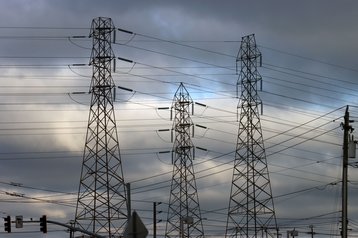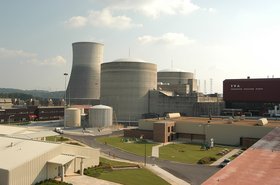Data and AI transition and energy transition go hand-in-hand. Renewables are essential for powering AI data centers if we want to keep costs low and drive the next wave of innovation in the economy.
Trying to prevent this alignment is akin to the early scepticism by US President Rutherford B. Hayes toward the telephone, or President Lyndon Johnson’s restrictive stance on cable television, both famously proven wrong as technology surged ahead regardless.
Attempting to resist renewable energy today is equally futile, like trying to stop a river with your bare hands. No matter how strong the rhetoric, the current is unstoppable.
However, a new energy system requires innovative management solutions; it cannot rely solely on the same tools and assumptions that system operators have used for the past 50 years.
Take the recent blackout in Iberia. While the full root cause will only be fully understood in the coming months, some critical facts have emerged clearly. It wasn’t caused by a shortfall in energy, the issue that traditional grid operators are most equipped to manage. In fact, there was abundant energy, with prices nearing zero just before the incident.
The frequency disturbance, widely misidentified as the blackout’s cause, was merely a symptom of a deeper, previously unrecognized issue, its impact amplified and accelerated by insufficient connected conventional generation to provide stabilizing inertia. Critically, the grid’s protection mechanisms, which relied on existing inertia as their first line of defence, failed to respond swiftly enough to prevent the problem from spreading.
This is not unprecedented. Similar events, such as the August 9, 2019, blackout in the UK, highlighted comparable infrastructural vulnerabilities. Spain had received multiple warnings – REDEIA, Spain’s Transmission System Operator holding company, after five separate alerts from its technical teams since 2020, formally acknowledged this risk to investors by February 2025.
Yet, there was a lack of urgency, a dangerous complacency even as renewable energy rapidly reshaped the grid. Renewable capacity in Spain surged from 34.6 percent in January 2020 to 52.4 percent by early May 2025.
The UK has learned important lessons from its event and responded by developing significantly more resilient and cost-effective energy systems. Spain is still evaluating the recent incident and is expected to adopt similar resilience measures. Other regions must follow this example.
Renewable energy remains the cheapest form of power generation available and works exceptionally well alongside additional support systems like flexible natural gas generation, batteries, and advanced demand response technologies.
Furthermore, large-scale AI data centers inherently possess built-in resilience capabilities. Properly designed, they naturally act as stability buffers and, under appropriate regulatory and business models, can proactively contribute to grid stability through real-time load management and reactive power control. Thus, the obstacle to fully harnessing data centers as grid assets is regulatory rather than technological.
This event should be viewed as a critical wake-up call, underscoring the growing gap between rapid system transformation and lagging institutional adaptation. Renewables are indeed central to our clean energy future, but they must be integrated with modern tools, innovative business models, and evolved mindsets. Traditional dispatchable resources such as natural gas and hydropower will continue to have important roles. Equally crucial, however, will be leveraging large-scale AI data centers as active, dynamic participants in maintaining grid reliability.
Ultimately, policymakers, businesses, and societies face a decisive choice: embrace innovation, resilience, and affordability, or cling to outdated paradigms and pay the escalating price of inaction.
Read the orginal article: https://www.datacenterdynamics.com/en/opinions/from-blackouts-to-breakthroughs-the-ai-renewables-nexus-and-the-future-of-grid-resilience/






